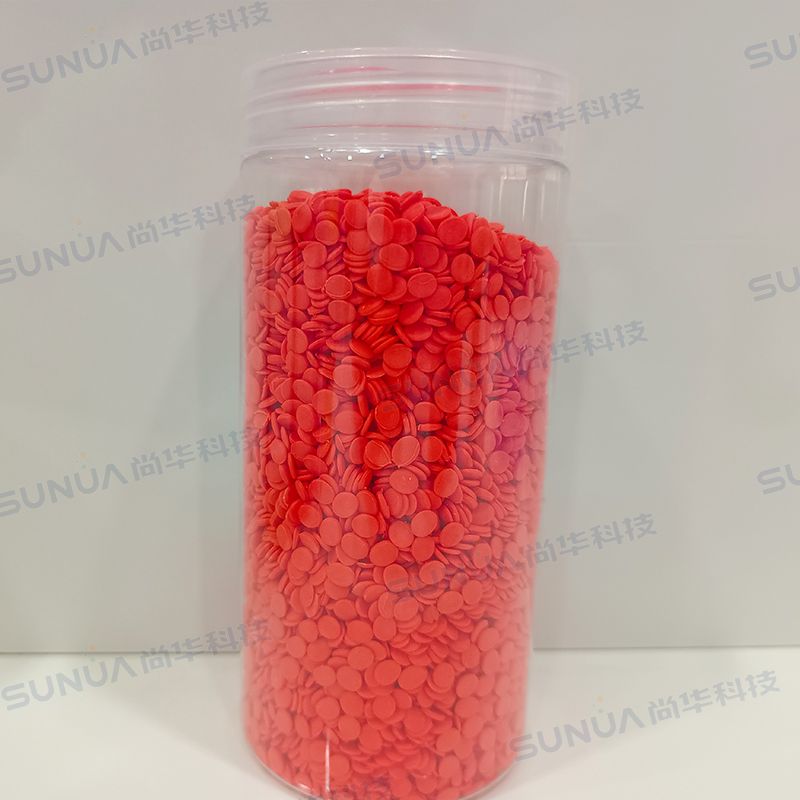How Glass Beads Improve Industrial Efficiency
Glass beads hold a pivotal role in modern industry. These tiny spheres enhance product performance and reduce costs. The global market for glass beads, valued at over USD 2 billion in 2023, continues to grow. Industrial efficiency becomes crucial in today's competitive landscape. Manufacturers seek ways to optimize processes and minimize waste. Glass beads offer solutions by improving durability and flow properties. These advancements contribute to sustainability efforts. The adoption of glass beads represents a strategic move towards greater productivity and environmental responsibility.
Understanding Glass Beads
Composition and Properties
Material Characteristics
Glass beads are fascinating little spheres made from borosilicate materials. These materials give the beads their strength and durability. Borosilicate glass is known for its resistance to thermal shock, which makes it ideal for various industrial applications. The specific particle size and thickness of each glass bead play a crucial role in its functionality. Industries like aerospace and automotive rely on these characteristics for efficiency.
Manufacturing Process
The creation of glass beads involves heating raw materials to high temperatures. This process forms molten glass, which is then rapidly cooled to create small, uniform beads. Techniques such as drawn beads, wound beads, and molded beads ensure consistency in size and shape. Consistency is vital for performance in applications like shot peening and polishing. The manufacturing process guarantees that each glass bead meets quality standards.
Types of Glass Beads
Solid vs. Hollow Beads
Glass beads come in two main types: solid and hollow. Solid beads provide more weight and are often used in applications requiring added mass. Hollow beads, on the other hand, offer lightweight solutions. These are perfect for industries that need to reduce weight without sacrificing strength. Choosing between solid and hollow depends on the specific needs of the application.
Coated vs. Uncoated Beads
Coated glass beads have an additional layer that enhances their properties. Coatings can improve reflectivity or add color, making them suitable for decorative purposes. Uncoated beads maintain their natural transparency and are often used where purity is essential. The choice between coated and uncoated beads depends on the desired outcome in industrial processes.
Applications of Glass Beads in Industry
Glass beads play a significant role in various industrial applications. You might wonder how these tiny spheres can make such a big impact. Let's dive into some key areas where glass beads shine.
Surface Finishing
Blasting and Cleaning
Glass beads excel in surface finishing tasks. Many industries use glass beads for blasting and cleaning surfaces. The process involves propelling glass beads at high speeds to remove unwanted materials. This method ensures a smooth and clean finish without damaging the underlying surface. Industries like automotive and aerospace benefit from this technique. The use of glass beads in blasting enhances the longevity and appearance of components.
Polishing and Deburring
Polishing and deburring also see the effective use of glass beads. You can achieve a polished surface by using glass beads to gently smooth out rough edges. This process is crucial in manufacturing where precision matters. Glass beads help in achieving a uniform finish, which improves the quality of the final product. The versatility of glass beads in polishing makes them a preferred choice in many sectors.
Additives in Manufacturing
Reinforcement in Composites
Glass beads serve as excellent additives in manufacturing. You might find glass beads used as reinforcement in composite materials. The addition of glass beads enhances the strength and durability of composites. Industries like construction and marine rely on these properties for better performance. The lightweight nature of glass beads also contributes to the overall efficiency of composite materials.
Use in Paints and Coatings
Paints and coatings also benefit from the inclusion of glass beads. The integration of glass beads improves the texture and coverage of paints. You can notice enhanced reflectivity and durability in coated surfaces. This application finds relevance in road markings where visibility and safety are paramount. The demand for glass beads in paints and coatings continues to grow, driven by advancements in retroreflective technology.
The real-world applications of glass beads demonstrate their versatility and effectiveness. From improving product performance to enhancing safety, glass beads prove invaluable across various sectors. The growing market for glass beads underscores their importance in modern industry.
Additional resources:Key Questions to Ask When Choosing a Solar-Powered Garden Light
How Water Powered Pumps Revolutionize Sustainable Farming?
How Does Waterproof Outdoor Gear Cost Work?
Key Questions to Ask When Evaluating PE Coated Tarpaulin Durability
How Does Steel Wire Mesh Support Tunnels?
Maximize Strength with Single Bars Reinforcing Mesh Panel
Optimizing Construction with Tailored Reinforcing Mesh 2024
Benefits of Using Glass Beads
Enhancing Efficiency
Reducing Material Waste
Glass beads help you cut down on material waste in your industrial processes. The uniform size and shape of each glass bead ensure precise application. This precision minimizes excess use of materials. You get a cleaner, more efficient process. Industries like aerospace and automotive see significant benefits. The reduction in waste contributes to cost savings and environmental sustainability. Glass beads offer an eco-friendly alternative to other abrasive materials. The absence of free silica in glass beads makes them safer for the environment.
Improving Product Quality
Glass beads play a crucial role in enhancing product quality. The smooth and satin-like finish provided by glass beads improves the appearance and durability of products. You achieve a higher standard of quality with glass beads. Industries that require high-quality finishes, such as jewelry and electronics, rely on glass beads. The consistent performance of glass beads ensures that every product meets quality standards. You can trust glass beads to deliver reliable results every time.
Cost-Effectiveness
Longevity and Durability
Glass beads offer longevity and durability in various applications. The robust nature of each glass bead means you get a longer-lasting product. This durability reduces the need for frequent replacements. You save money in the long run. Industries like construction and marine benefit from the durability of glass beads. The strength of glass beads ensures that structures remain intact and perform well over time. You can count on glass beads to withstand harsh conditions.
Energy Savings
Glass beads contribute to energy savings in industrial processes. The lightweight nature of hollow glass beads reduces the energy required for transportation and application. You experience lower production costs and improved efficiency. The use of glass beads in manufacturing leads to significant energy savings. Industries focused on sustainability goals find glass beads beneficial. The environmental advantages of glass beads align with efforts to reduce carbon footprints. You make a positive impact on the environment by choosing glass beads.
Challenges and Considerations
Environmental Impact
Recycling and Disposal
Glass beads offer benefits, but recycling and disposal present challenges. You might wonder why recycling is important. Many glass beads contain heavy metals like arsenic and cadmium. These metals pose risks to ecosystems and public health. Manufacturers prioritize eco-friendly alternatives. The shift towards sustainability drives demand for recycled glass beads. You can contribute to environmental protection by choosing products made from recycled materials. Proper disposal methods ensure that glass beads do not harm the environment.
Sustainable Sourcing
Sustainable sourcing of glass beads is crucial. You need to consider the origin of raw materials. The production process should minimize environmental impact. Manufacturers adopt greener practices to meet consumer demands. The trend towards eco-friendly materials influences market growth. You can support sustainability efforts by selecting products from responsible sources. Sustainable sourcing ensures that glass beads contribute positively to environmental goals.
Technical Limitations
Compatibility with Materials
Compatibility with materials presents a technical challenge. Glass beads must work well with various substances. You need to ensure that glass beads do not react negatively with other materials. Industries rely on compatibility for successful applications. The choice of glass beads depends on specific requirements. You should consult experts to determine the best type of glass bead for your needs. Compatibility issues can affect product performance and quality.
Limitations in Specific Applications
Glass beads face limitations in certain applications. You might encounter challenges in using glass beads for specific purposes. Some industries require specialized solutions. The lightweight nature of hollow glass beads suits many applications. However, solid beads may be necessary for added weight. You need to evaluate the suitability of glass beads for each application. Understanding these limitations helps you make informed decisions. Proper selection ensures optimal results in industrial processes.
Glass beads significantly boost industrial efficiency. You see improvements in durability, flow properties, and sustainability. The strategic use of glass beads enhances productivity and environmental responsibility. Innovations in glass bead technology promise exciting advancements. New decoration types and manufacturing techniques emerge. You can expect more efficient and versatile applications. The future of glass beads in industry looks promising. Embrace these tiny spheres to stay ahead in the competitive landscape.
Why and How You Should Choose a Marble Fireplace?
A Comprehensive Guide to Different Types of Bristle Paint Brushes
What benefits does fire retardant mesh fabric provide?
Hotel conference table on the functional relationship and layout of the meeting room
How Does PE Coated Tarpaulin Enhance Durability?
Top Heavy Duty Pipe Supports for Sale in 2024
Pipe Brace Clamps vs. Traditional Clamps: Which Reigns Supreme?
- Previous: tempered glass is
- Next: None



